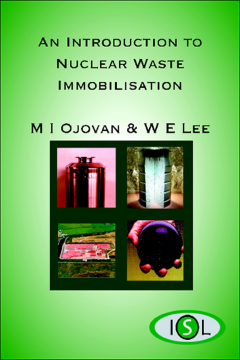
BOOK
An Introduction to Nuclear Waste Immobilisation
Michael I. Ojovan | William E Lee | William E. Lee
(2010)
Additional Information
Book Details
Abstract
Safety and environmental impact is of uppermost concern when dealing with the movement and storage of nuclear waste. The 20 chapters in 'An Introduction to Nuclear Waste Immobilisation' cover all important aspects of immobilisation, from nuclear decay, to regulations, to new technologies and methods. Significant focus is given to the analysis of the various matrices used in transport: cement, bitumen and glass, with the greatest attention being given to glass. The last chapter concentrates on the performance assessment of each matrix, and on new developments of ceramics and glass composite materials, thermochemical methods and in-situ metal matrix immobilisation. The book thoroughly covers all issues surrounding nuclear waste: from where to locate nuclear waste in the environment, through nuclear waste generation and sources, treatment schemes and technologies, immobilisation technologies and waste forms, disposal and long term behaviour. Particular attention is paid to internationally approved and worldwide-applied approaches and technologies.
* Each chapter focuses on a different matrix used in nuclear waste immobilisation: Cement, bitumen, glass and new materials.
* Keeps the most important issues surrounding nuclear waste – such as treatment schemes and technologies, and disposal - at the forefront.
"...an excellent source of knowledge for undergraduates who require general information on nuclear waste and its immobilisation."
-Dr. John Fernie in MATERIALS WORLD, May 2007
